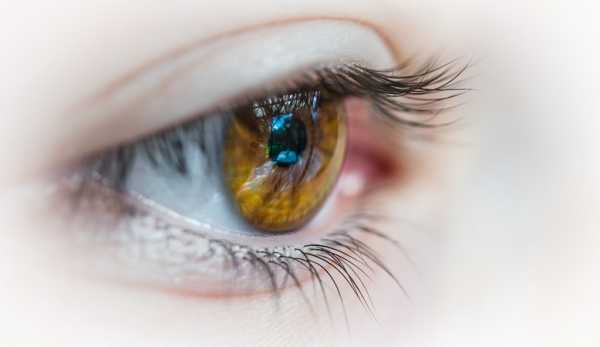
How Will Artificial Intelligence Transform Ophthalmology
The term artificial intelligence (AI) might still feel like a new-age concept. However, each time you say, “Hey, Siri,” or ask Alexa to add a few items to your grocery list, you are using this innovative technology. AI is used in just about every industry, from customer service, to education, to healthcare. Modern medicine is embracing AI to accurately diagnose conditions, develop new medications, and perform AI-enabled robotic surgeries. These are not the only healthcare specialties that are turning to AI to improve patient care.
In recent years, AI has accelerated the way specialists diagnosis and treat common eye conditions such as age-related macular degeneration, glaucoma, retinopathy of prematurity, and cataracts. Before we discuss a few ways AI is advancing the treatment of individuals with eye conditions, let’s review a few facts about AI.
Basics of Artificial Intelligence
The technology behind AI is simple. AI helps machines learn from experiences so that they can perform functions that were once only done by humans. It’s been around since the 1950s, but is more sophisticated today than ever before.
The impressive thing about AI is that it is so much more than a computer that can beat you at a game of chess or translate your voice messages into text. AI performs tasks in large numbers with precision and without the risk of becoming tired and making errors like humans.
AI is transforming industries like management and manufacturing. Tasks that used to be left to staff members, such as processing data, are now moved to a computer. This frees up managers to perform the more significant parts of their job and potentially decreases dollars spent on salaries and benefits of more employees. In manufacturing, AI and machine learning are taking over jobs like packaging and assembly.
The possibilities of AI are endless in just about every industry imaginable. Here are a few ways AI is transforming the future of ophthalmology:
Image Recognition
Innovations in imaging could change the future of diagnosis and treatment of eye conditions. As diagnostics advance and become easier to perform and more sensitive to diagnosing diseases, more people will be able to have screenings easier. Better diagnostics may mean that people are diagnosed and treated sooner, therefore preventing further vision loss. AI won’t ever take the place of a skilled ophthalmologist, but it certainly would let doctors know which patients need more thorough assessments and diagnostics.
Cloud-Based Recognition of Macular Degeneration
Most eye conditions are found through a manual exam performed by your physician. Macular degeneration is a condition that typically occurs with advanced age and causes severe, irreversible vision loss. Individuals living with the condition will experience decreased visual quality and resolution, dark, blurry areas at the center of their field of vision, and changes in their perception of colors.
Diagnosing macular degeneration is limited by what your physician can see during an exam, which means that they may not recognize minor changes to the baseline condition of the eye until changes are more advanced.
A recent study showed the effectiveness of a cloud-based machine learning tool that’s been trained to recognize signs of conditions like macular degeneration. This AI tool has been shown multiple images of the retina in various stages of health so that it can detect even minute changes that are common in the early stages of macular degeneration. The technology won’t replace your eye doctor but will provide them with critical data about the retina that they can’t see on their own.
Detecting Diabetic Retinopathy
Diabetes is a condition in which your body no longer makes or uses insulin for energy. The lack of insulin allows blood sugar levels to rise in the body. Over time, elevated glucose levels can cause damage to organs, such as the eyes.
Diabetic retinopathy is a medical condition in which high blood sugar for a longtime can cause damage micro blood vessels of the retina, which is located at the back of the eye itself. During the initial phases of the disease, some patients have no symptoms. However, as it progresses, common symptoms include:
- Impaired ability to see colors
- Vision loss
- Presence of spots or floaters
- Seeing dark spots in the field of vision
- Blurred vision
AI may be able to detect the presence of diabetic retinopathy earlier. A new technology called IDx-DR is the first FDA-approved AI device used for finding the signs of diabetic retinopathy. The machine analyzes pictures of the eyes obtained with a retinal camera. This test is often done by primary care physicians managing diabetes so that they can determine the optimal time to refer their patients to an ophthalmologist. The earlier diabetic retinopathy is discovered, the quicker it can be treated, and long-term adverse effects minimized.
The Future of Ophthalmology
Healthcare was slow on the uptake of innovative technology for many years. Today, physicians and health systems are embracing advancements such as electronic medical records, advanced imaging techniques, and the use of virtual reality headsets to treat conditions like addiction, mental illness, and chronic pain.
Of course, we must evaluate the risks of each new advancement as we move forward. For example, electronic medical records hold significant possibilities for breach of data, and virtual reality headsets could affect your vision if not used properly.
One critical factor to remember is that technologies like AI are saving lives through earlier detection and treatment of conditions. The future of tech in ophthalmology is bright, and AI is a significant component of what's to come.


